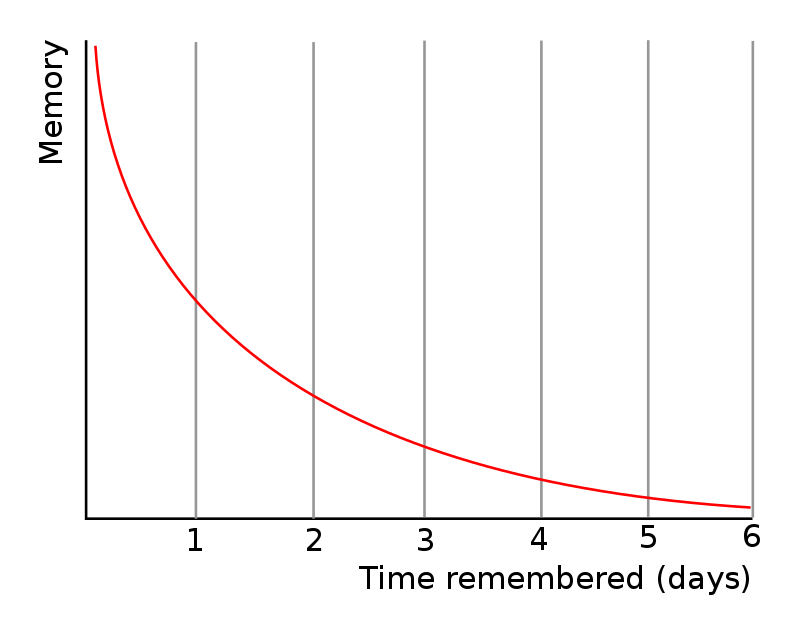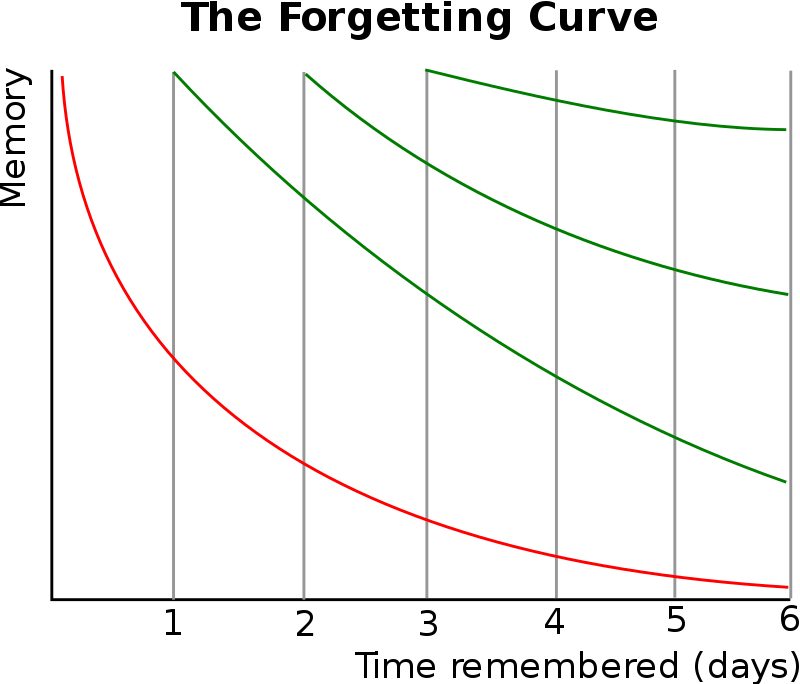How Subject Maps Help Speed up Learning
Subject maps are a tool to help with revising material that you are currently learning. Why this is important? Let me explain.
Several years ago I became interested in a somewhat non-conventional topic: what can I do to memorize things faster? I did some research - notably, bought a course by Jonathan Levi on how to become a super learner. What I discovered boiled down to a single fact - the way we memorize information is biologically predefined.
More precisely, there are several cornerstones to this process:
-
Repetition is king
Our brain has a region called hippocampus that implements a special learning algorithm. It works as follows:
- if anything produces a significant emotional impression on us
- or if it is repeated multiple times,then go and remember it, otherwise - discard it.
Unfortunately, academic material is unlikely to significantly emotionally impress us (except maybe for some horrifyingly complex math). So, we are left with repetition.
-
Visual input is also king
We are much better at memorizing images than other types of info.
-
New information sticks to what we already know
Technically speaking, memorizing means building a neural network that holds the data. If our brain can stick this newly acquired neural network onto some existing neural network that holds data that we already know, then good for us, this significantly impoves our chances to remember new info. If not, then new info is more likely to be lost (forgotten).
These issues form the basis of memory tricks and techniques (like mind palace).
Example: you want to set up a password "MouseHair" - how do you remember it? In your mind you create an image (visual input) of, let's say, Mickey Mouse (link to something you already know) with long green hair (funny - emotional impression). Then, connect it to the site - for example, Gmail: imagine Sergey Brin who hugs Mickey Mouse with long green hair. May also apply green hair to Mr. Brin (more emotional impression won't hurt). By this time you are probably done and your password will stick with you forever.
These techniques work (I tried them with passwords). But, obviously, they have their area of applicability (not everything can be translated into funny images; also, coming up with a good image requires an effort and in practice may be slow and tiresome).
What happens when we watch or read something the way we normally do
Say hi to Ebbinghaus curve! There was a 19th century German scientist called Hermann Ebbinghaus. He measured the effectiveness of learning process (on himself) and came up with a conclusion that is eloquently illustrated by this graph - that after several days we, typically, remember nothing:

But if we alter our learning process to introduce "spaced repetition" (regular reviewing of information), we are likely to remember almost everything:

These ideas form the basis of one well-known learning technique - flashcards. How it works: say, you are studying a history textbook. Then make flashcards with the dates, names and events you need to memorize (a name on the front and more details on the back of the card), apply spaced repetition to them - and voilà, you have learnt it.
Personally, I'm a big fan of this approach. I started using it as a teenager. Unfortunately, I only used it with foreign languages (it never occured to me that it might be applicable elsewhere). Recently, I tried it out with computer science and, unfortunately, it didn't work out as expected. The problem was that CS subjects tend to come in the form of (deeply nested) classifications - there is a topic A that subdivides into topics B and C... etc, etc. Flashcards, on the other hand, by definition support flat structure.
So, the bottom line: flashcards work well when the topic can easily be reduced to a set of key-value pairs (fact - definition). Not all subjects can be effectively described with flashcards.
One more revelation: remembering is making connections, understanding is figuring out structure
I owe this to one of the learning gurus on Youtube: remembering is about making simple connections (i.e., color - red), but understanding is about figuring out the intrinsic structure of the subject - what consists of what and why do we have such division. For example, the rainbow consists of 7 colors and they follow each other from warm to cold.
There is a tool that helps us document the structure of a subject - mind maps:

I tried using mind maps to learn computer science topics and I didn't become a fan of them. There are multiple reasons for this - notably, they take a lot of effort to create and they are not scalable.
Finally, to the subject maps
At first I built a flashcards app. I applied it to learning a foreign language (German - worked very well) and computer science (worked out poorly because of the app's inability to create classifications). Fast forward a couple of years and here is a tool that works well with complex topics:
- it helps to quickly create notes
- these notes can be easily reviewed later using spaced repetition - the biggest cornerstone of learning, want it or not
- it leverages our inclination to memorize visual data by adding a tree-like structure with color coding (each map has a unique visual footprint)
- by design it allows to organize concepts into a meaningful hierarchy reflective of relationships between them, which boosts understanding.
Also, it scales pretty much indefinitely - add 10, 100 or 1000 concepts to a single map and it will still be able to handle them.
Any topic, simple or complex, can be represented with a subject map.